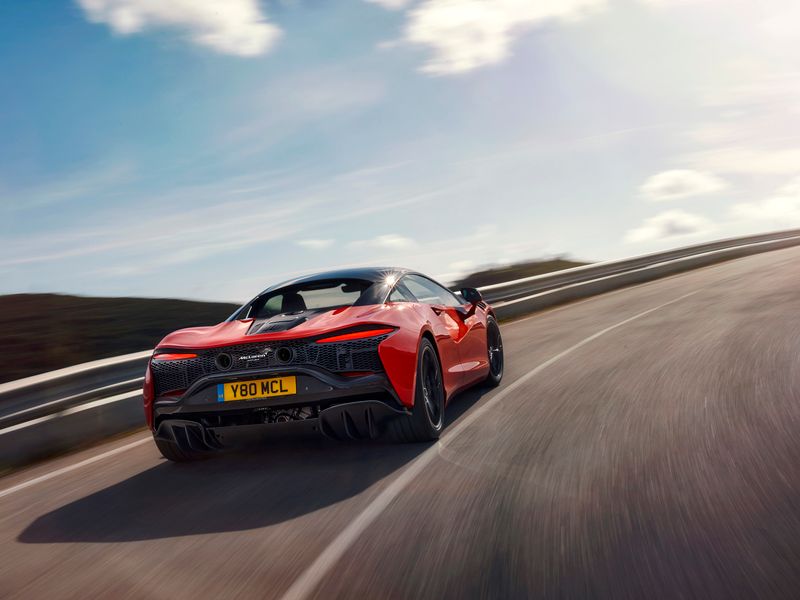
Deliveries of McLaren’s newest model, the Artura, will be delayed for a second time.
The Artura’s October 2020 market launch was delayed to June because of the pandemic. But software supplier-related issues have now pushed U.S. deliveries to late August or early September, sources said.
The Artura is a hybrid supercar on a diet. The vehicle combines creative engineering and efficient packaging to achieve a curb weight of 3,303 pounds, despite being saddled with a hefty battery pack.
Lightweight design “is a pillar of our DNA,” Dan Parry-Williams, director of engineering design, said during a press briefing May 11. “It adds driving engagement, agility and reduces CO2 [emissions].”
The Artura signals the future direction of the British sports car maker as throaty combustion engines are increasingly viewed by environmentally conscious governments as anachronisms.
McLaren seeks to transition to a 100 percent electrified portfolio by 2026, with the first EV model expected by the end of the decade.
The Artura introduces McLaren’s Carbon Lightweight Architecture platform and combines a twin-turbocharged 3.0-liter V-6 engine — the first in a McLaren — with an e-motor and a 7.4-kilowatt-hour battery pack.
The hybrid powertrain delivers combined output of 671 hp and can propel the sports car from 0 to 60 mph in 3 seconds. The Artura has a top speed of 205 mph and can travel up to 19 miles in EV-only mode.
Design Director Rob Melville described the Artura as an “Olympic decathlete.”
“It’s very good at many things,” he said.
Minimizing the weight penalty from the hybrid powertrain was an “obsession” in the development of the Artura, McLaren’s powertrain boss Richard Jackson said.
To save weight, the British automaker scrapped the typical V-8 engine for a lighter, smaller-footprint V-6. The downsized engine is 7.5 inches shorter and 110 pounds lighter than McLaren’s twin-turbo V-8.
The Artura’s electric motor is less than half the weight of the unit in McLaren’s P1 supercar, while power density is 33 percent higher.
The e-motor is encased in a disc-shaped system sandwiched between the engine and transmission, which avoids the need for gears and shafts to provide power to the input of the transmission. The setup reduces power losses and benefits packaging and weight, the automaker said.
Engineers even squeezed weight savings from the electrical system. The Artura has 25 percent less cabling, while the model’s electrical harness is 10 percent lighter than that in the 720S model.